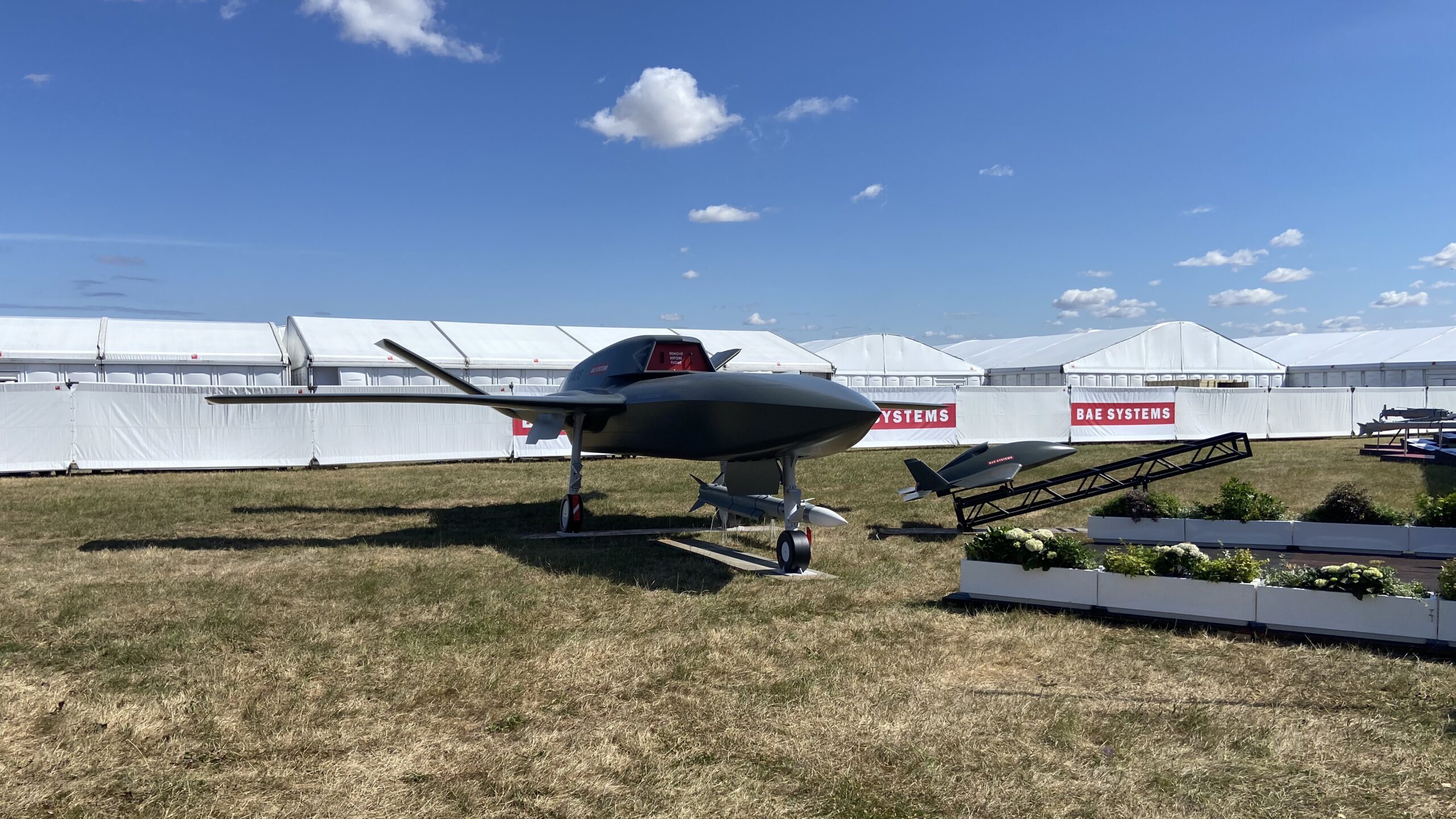
The two new designs from BAE are showcased at RIAT 2022. (Andrew White/Staff)
FARNBOROUGH AIRSHOW: BAE Systems has unveiled a new set of Air Domain Uncrewed Aerial System (UAS) concepts, the first UAS designs BAE has put forward since the Taranis unmanned combat aerial vehicle demonstrator in 2013.
The mock-ups, referred to as UAS Concept Designs 1 and 2, have been designed to “augment or substitute existing forces” including F-35 and Typhoon and to provide potential customers with “affordable mass; reduced risk to life; enhanced operational effectiveness; and bridge to 6th generation capabilities,” BAE marketing material read.
Speaking to Breaking Defense over the weekend at the Royal International Air Tattoo in Fairford, UK, Steve Reeves, BAE Systems’ head of future systems – advanced programmes, described how future operating environments will be dominated by information and multi-domain systems.
“We have been developing these for a long time. We know autonomy is good for operations in contested environments, so now is an appropriate time,” he said.
According to Reeves, both UAS Concepts 1 and 2 have been designed to initiate “conversations of interest with potential customers.”
UAS Concept 1 comprises a “small, versatile UAS” designed to augment existing forces in attack and ISR roles, BAE Systems confirmed. Expendable but recoverable, the fixed-wing design can operate at a maximum altitude of 30,000 ft, carrying a 40 kg payload for up to four hours in endurance, although performance parameters remain indicative at this point in time, Reeves said.
Designed to operate at a cruising speed of 0.5 Mach, UAS Concept 1 is rail-launched and can be recovered by parachute. The air frame features storage space and could operate as a stand-alone system or in a swarming configuration. Potential applications include electronic attack, air to ground and ISR missions, Reeves added, before suggesting the air frame could be launched from land or maritime environments.
UAS Concept 2 has been designed as a medium-size UAS to “substitute or augment existing forces in attack, ISR and control of the air roles,” according to BAE. Company literature describes the UAS as attritable, but capable of conducting more than 100 sorties.
Designed to operate at a maximum altitude of 40,000 ft, UAS Concept 2 also comprises a fixed-wing design. It could carry an internal payload of 500 kg for up to five hours endurance while operating at a cruise speed of 0.75 Mach or above, according to BAE. The air frame also has a maximum take-off weight of approximately 3,500 kg.
UAS Concept 2 is designed for conventional take-off and landing. It also features electric control systems and containerized storage space. Similar to UAS Platform Concept 1, Concept 2 could be launched from land or maritime environments.
Potential applications, according to Reeves, include electronic attack and ISR missions. Additional use cases could include air to ground missions with up to four MBDA Spear Capability 3 air-to-ground munitions; or air-to-air missions with a pair of MBDA Meteor Beyond Visual Range Air-to-Air Missiles (BVRAAMs).
However, Reeves confirmed both concepts remain in the design phase, adding: “We don’t necessarily have to build demonstrators. We want to deliver capability at an optimal price point.”
Both developments are internally funded as research and development by BAE, although Reeves did suggest the company remains open to partnering with potential customers and industry should opportunities arise.
“We chose RIAT as the launch event to generate interest with partners. This is a separate opportunity for the UK to Tempest and there are emerging opportunities to broaden out capability,” he added.
“There is a pressing military need for UAS in 2025 and beyond. Key to the journey will be trusted autonomy so therefore, we are going to start by focussing on ISR,” Reeves concluded.






















